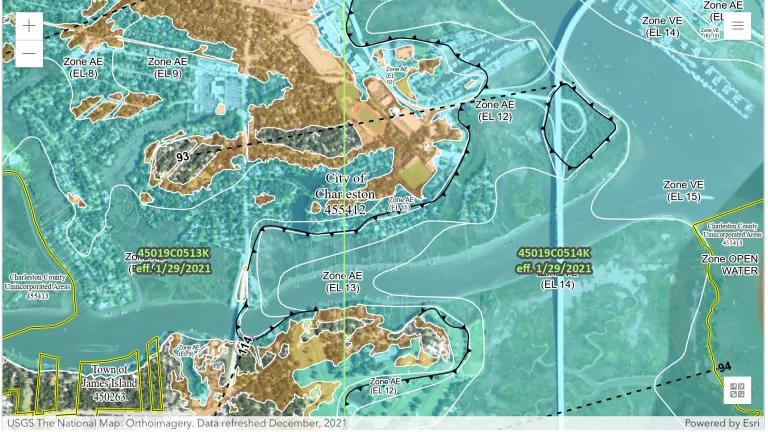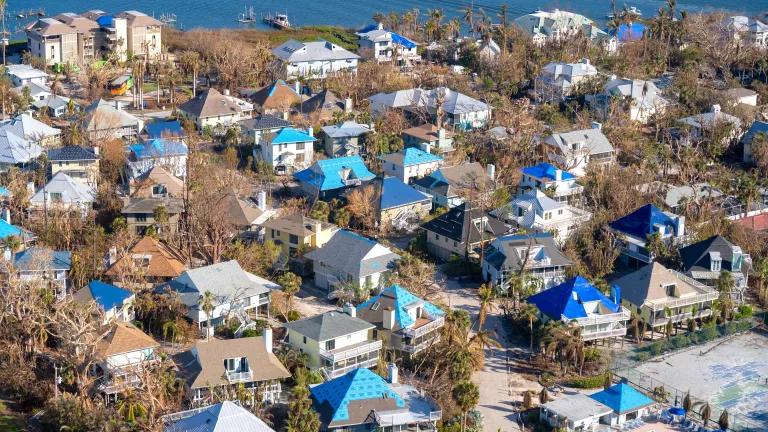When Hurricane Sandy comes up in public conversations these days, it’s often in the context of Congress arguing about how much money should be allocated to deal with the devastating impacts. No surprise, there’s a lot of partisan posturing.
What seems to be getting lost in much of the debate is a big picture view of where else we might be vulnerable to the increasing number of extreme weather events, and what needs to be done to prepare for them.
A good way to help understand vulnerability is to grade current performance. That’s what the Trust for America’s Health (TFAH) has just done in their 10th annual Ready or Not report. The study—which features a picture of Sandy-ravaged homes on its cover—is especially timely because it focuses in part on the public health impacts of extreme weather events. When we think of extreme weather, we often think of floods, hurricanes, mega-thunderstorms and the wrath of rising seas from storms like Sandy. Too often, we don’t think of the direct impact these events have on our health.
The TFAH study gives 35 states a “grade” of six or lower out of ten on their levels of preparedness based on a set of key indicators. (When I was in school, anything less than six out of ten was failing.)
Kansas and Montana scored the lowest—three out of 10—and Maryland, Mississippi, North Carolina, Vermont and Wisconsin scored highest—eight out of 10, according to TFAH. You can find a nice map of the results here. The report also notes that:
“[Twenty-nine] states cut public health funding from fiscal years (FY) 2010-11 to 2011-12, with 23 of these states cutting funds for a second year in a row and 14 for three consecutive years. In addition, federal funds for state and local preparedness have decreased 38 percent from FY 2005-2012 (Centers for Disease Control and Prevention (CDC) funds, adjusted for inflation). States are reporting that gains in public health preparedness achieved in the past decade since September 11, 2001 are eroding, and since 2008, budget cuts have resulted in more than 45,700 job losses at state and local health departments”
TFAH’s Executive Director, Jeff Levi said earlier this week:
"For some reason, as a country, we haven't learned that we need to bolster and maintain a consistent level of health emergency preparedness. Investments made after September 11th, the anthrax attacks and Hurricane Katrina led to dramatic improvements, but now budget cuts and complacency are the biggest threats we face."
NRDC also recently conducted a ranking of the preparedness of all 50 states, with the focus on climate change and water-related impacts. Unfortunately, we reached a similar conclusion: that 29 states or nearly 60% of the states are inadequately prepared to address the threats from climate change related to water.
Our report also found that only nine states have developed comprehensive adaptation plans to address the threats from climate change, and six states have failed to address either the pollution that contributes to climate change or to deal with planning for the associated threats. (Since the release of our report, Connecticut has joined the top-ranking states with its release of a comprehensive plan.)
Folks in DC and in the states should take notice and begin to think longer term and larger scale about these challenges.
Another way to motivate states to take appropriate actions to prepare for the impacts of climate change is through financial incentives. That’s one strategy we recently supported by petitioning the Federal Emergency Management Agency (FEMA) to require states to consider climate change in the disaster mitigation plans they submit to FEMA. States of course should be doing this already, but if our petition is successful, state funding for emergency planning will be contingent upon states factoring climate into their preparedness plans.
Hopefully, recent extreme weather events and pressure from citizens and informed advocates will lead us towards a more ready America. Because right now as a nation, we are anything but prepared.




